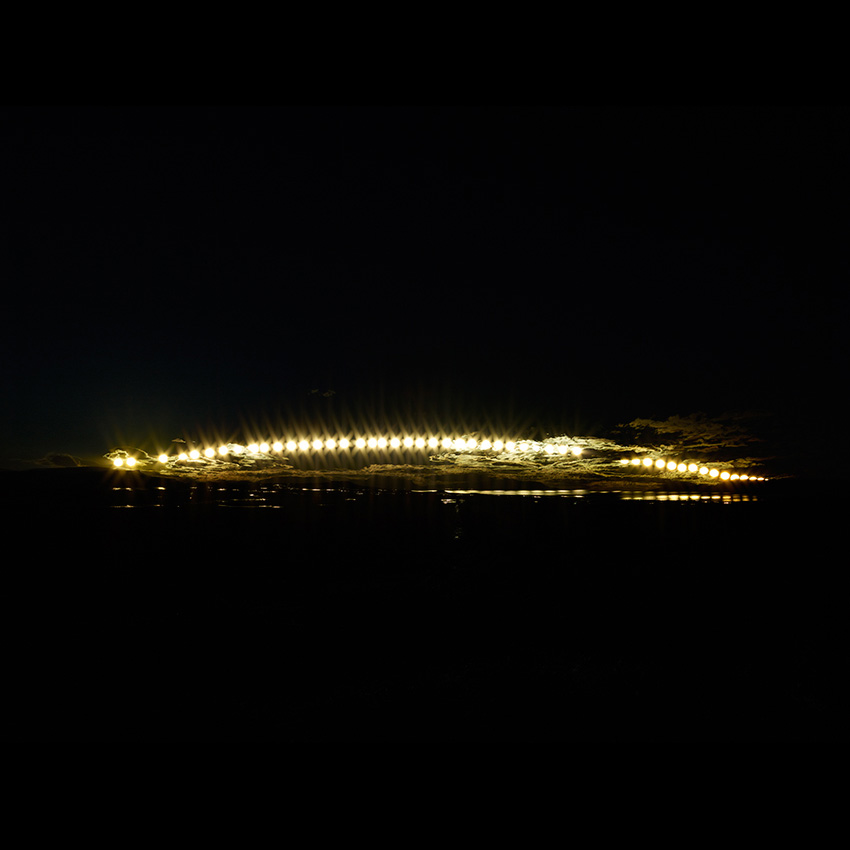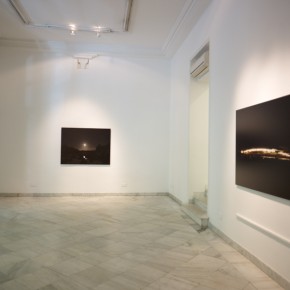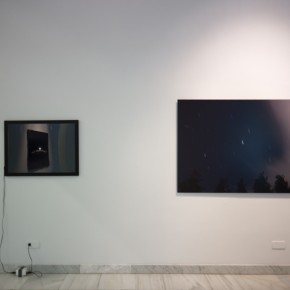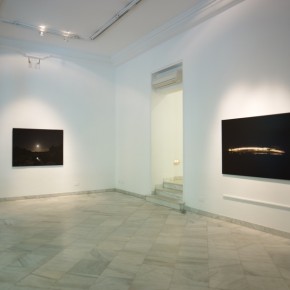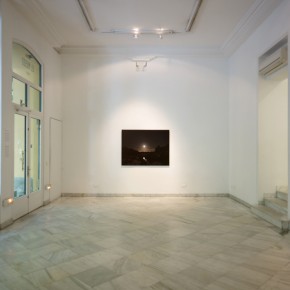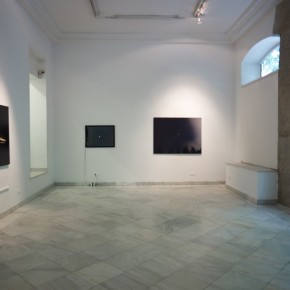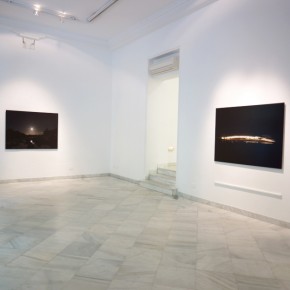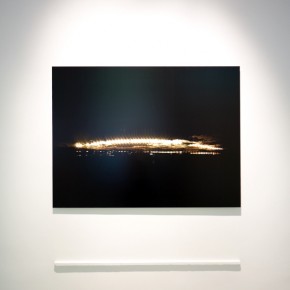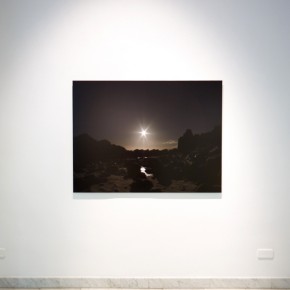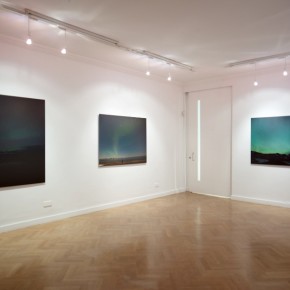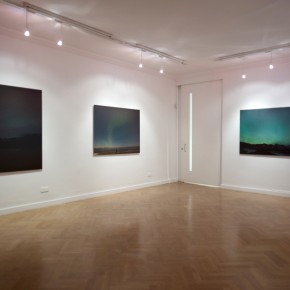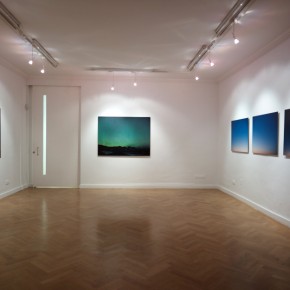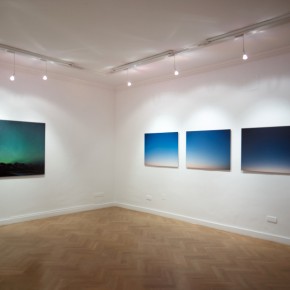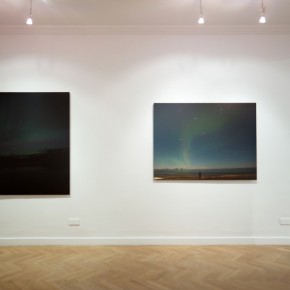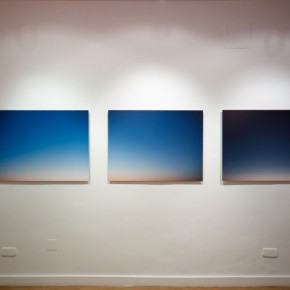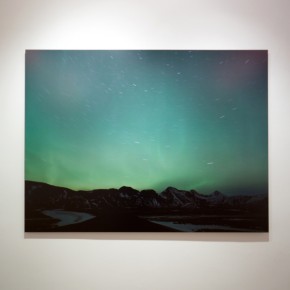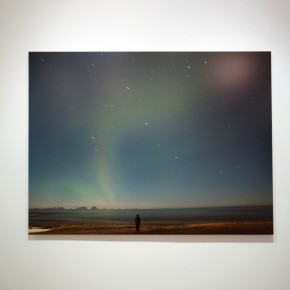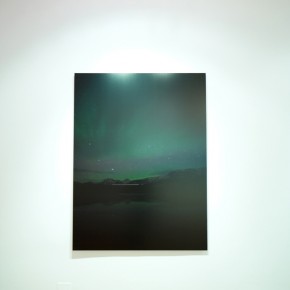Suwon Lee en Photoespaña 2013
The darkness of light
Exposición individual de Suwon Lee el marco de Photoespaña 2013
Con la muestra titulada The darkness of light, del 5 de junio al 13 de julio 2013, en la Galería Fernando Pradilla, en la ciudad de Madrid, Suwon Lee expone en el marco de Photoespaña 2013, su más reciente cuerpo de trabajo, en el cual dirige su lente hacia los astros y los fenómenos lumínicos en el firmamento, a través de un conjunto de fotografías de larga exposición que generan imágenes que no son visibles al ojo humano, pero que a través de la cámara, Lee logra captar para crear atmósferas y situaciones pictóricas, pintando con la luz.
Desde la noche de los tiempos
Antoine Henry-Jonquères
La oscuridad de la noche se despliega como un inmenso telón acribillado por minúsculos fuegos estelares. Éstos se encienden como linternas en el crepúsculo y aumentan de tamaño y de número mientras, abajo, la tierra le va dando la espalda al sol. Empieza el momento del día en el que el ojo humano puede contemplar las estrellas sin cegarse. Del otro lado del planeta, el sol borra la presencia de cualquier otra fuente de luz. Esta única luz y sus sombras son las que ejercen el orden del espacio y del tiempo: la primera manecilla del primer reloj es la sombra que cruza la tierra. Al igual que el bien y el mal, la vida y la muerte o el ruido y el silencio; la luz y la sombra en su constante encuentro parecen ser las generadoras de la energía que hace girar la moneda de las que son cara y cruz.
Al mostrarnos los delicados flujos, las pequeñas concesiones que se dan entre estos contrarios, las obras de Suwon Lee nos acercan a los límites de nuestra percepción, cerca de donde todo empieza . Capturan momentos de contemplación en lugares aislados bajo el cosmos, lejos del mundo actual y su eufórica ansiedad. Nos colocan nuevamente sobre la tierra creadora, de la que somos solo parte, personajes secundarios de una obra cuyo final no conoceremos. Esta realidad física y espiritual no se reduce en un fatalismo ciego. Por el contrario, al mostrar los límites del cuerpo, la mente crea su propio terreno, fértil y honesto. Suwon Lee pasea por esos pequeños límites, toca los contrarios, crea pausas en el tiempo.
Los terrenos fotografiados podrían remontarse a la prehistoria. Son paisajes de apariencia atemporal, casi permanentes. Habrán visto el nacimiento de la humanidad, al hombre intentando leer por primera vez, las estrellas. Aunque alguna de estas fotografías nos muestre características específicas de un lugar, Suwon Lee no detalla los nombres o las coordenadas de cada terreno. Estamos en varios entornos a la vez, o por el contrario, podríamos estar siempre en un no-lugar. Es el manejo personal del tiempo, lo que nos hace sentir que estuvimos en el mismo “momento” en cada espacio en particular, un lugar inventado para ese instante.
Los paisajes de Suwon Lee suelen ser nítidos, casi inmóviles, mientras que la luz se abre lentamente, cambiando de intensidad, expandiéndose según la exposición de la cámara. El aparente movimiento de las estrellas nos lleva a una realidad primigenia: son ellas las que giran alrededor de la tierra. Solo hacen falta unos segundos o unos pocos minutos para fijar esas luces inestables sobre un entorno que permanece estoico, desde la noche de los tiempos. Pero lejos de dejarnos frente a un paisaje permanente, nos coloca frente a nuestra propia impermanencia. Las realidades de Suwon Lee nos muestran las siempre cambiantes coordenadas del tiempo. Después de detenernos brevemente en el centro del universo, el reloj vuelve a tomar curso, esta vez sabiendo, que en la dirección que sea, el tiempo no va a nuestro encuentro.
Como marionetas ensoñadoras atadas a las constelaciones por la noche y obreros cegados por el sol durante el día, gravitamos inadvertidos en la Vía Láctea. Las fotografías de Suwon Lee tienen la capacidad de hacernos mirar el paisaje desde esta perspectiva, sin la perturbación de nuestra propia presencia; nos desarman de juicios y de valores, se reflejan en nuestras pupilas y nos ubican en el universo diario al que hemos sido entregados.
Since the dawn of time
Antoine Henry-Jonquères
The darkness of night unfolds like an immense curtain pierced by minuscule stellar flames. They light up like lanterns at dusk, growing in size and number as, below, the Earth turns its back to the sun. So begins the time of day in which human eyes can look at the stars without being blinded. On the other side of the planet, the sun erases any other source of light. This single light and its shadows shape the order of space and time; the first hand of the first clock is the shadow that travels across the land. Like good and evil, life and death or noise and silence; light and shadow, in their eternal crossing, seem to generate the energy powering the coin flip of which they are heads and tails.
By showing these delicate flows, the small concessions granted among these opposites, the work of Suwon Lee bring us closer to the limits of our perception, close to where it all begins. They capture contemplative moments in isolated spaces within the cosmos, far from the world and its euphoric anxiety. We are placed back on this generative Earth, of which we only are a part, as secondary characters of a work whose end we will not know. This physical and spiritual reality is not confined to blind fatalism. On the contrary, by showing the limits of the body, the mind creates its own territory, one that is fertile and honest. Suwon Lee walks us through these little boundaries, touching opposites, creating pauses in time.
The pictured landscapes could date back to prehistoric time. The landscapes appear to be timeless, almost permanent. They will have witnessed the birth of humanity, mankind attempting to read the stars for the first time. Although some of these photographs show characteristics specific to a certain place, Suwon Lee does not reveal the names or coordinates of each landscape. We are in various environments at the same time, or instead, we could be in a non-place. It is the personal management of time that makes us feel that we have been in the same «moment» within each particular space, a place invented for that instant.
The landscapes presented by Suwon Lee tend to be focused, almost motionless, as light slowly enters, changing its intensity, and expanding in tune with the exposure of the camera. The apparent movement of the stars leads to a primal reality: it is them who revolve around the earth. A mere few seconds or a few minutes are required to fix those unstable lights on an environment that remains stoic, ever since the dawn of time. But, far from leaving us standing in front of a permanent landscape, it confronts us with our own impermanence. The realities Suwon Lee shows reveal the ever-changing coordinates of time. After a brief pause at the center of the universe, the clock keeps ticking, this time with the knowledge that, in whatever direction it takes, it will not come to meet us.
Like dreamy marionettes tied to the constellations at night, and workers blinded by the sun during the day, we gravitate, unnoticed, through the Milky Way. Suwon Lee’s photographs have the ability to make us look at the landscape from this perspective. Without the disturbance of our own presence, they disarm our judgments and values, and reflected on our eyes, they situate us in the everyday universe to which we have been delivered.

